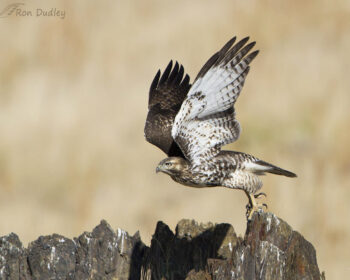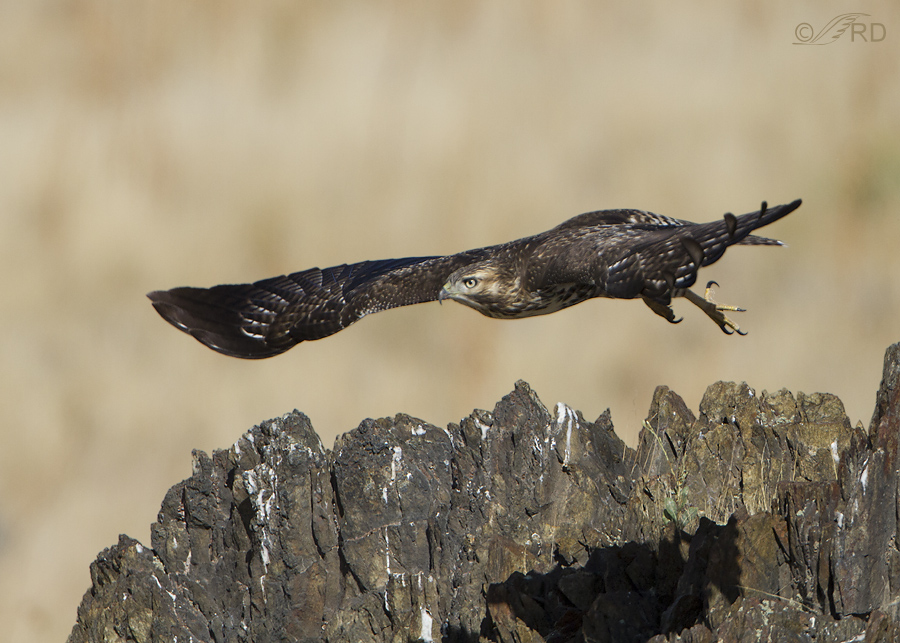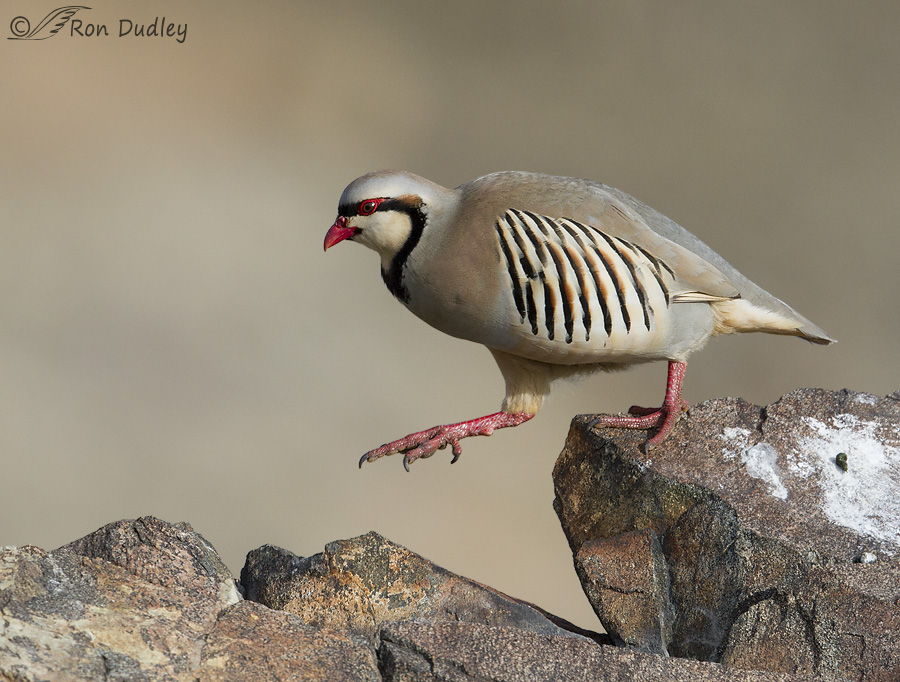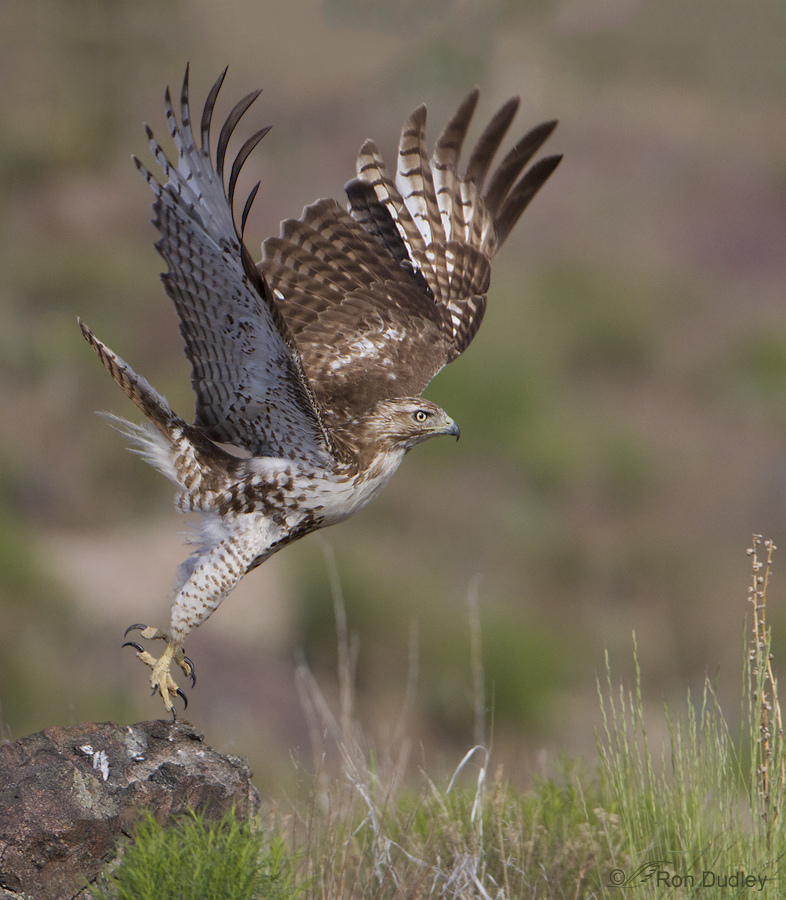Tag: farmington canyon complex
Red-tailed Hawk – A Young Bird And Very Old Rocks
One Giant Step For A Chukar
Light Red-tailed Hawk
Red-tailed Take Off From Farmington Canyon Complex Rocks
I’ve said before how much I prefer the very dark Farmington Canyon Complex rocks on Antelope Island as perches, over the bright white Tintic Quartzite rocks found on the northern part of the island. This juvenile Red-tailed Hawk made my morning last month when it chose just such a rock to hunt from. I always enjoy it when I can get multiple shots of some interesting behavior or action in sequence. To me it’s almost like a very slow motion video and though it may include a few images that aren’t perfect individually I think that collectively the photos gain value as a group for what they illustrate – the whole can be greater than its parts. 1/2500, f/7.1, ISO 400, 500 f/4, 1.4 tc, shot from pickup window, natural light, not baited, set up or called in Photographing take-offs is always a challenge. The bird may just sit there for a half hour or longer but when it happens it’s quick and easy to miss. 1/2500, f/7.1, ISO 400, 500 f/4, 1.4 tc, shot from pickup window, natural light, not baited, set up or called in You also need to be concerned about what direction it will go and if you’re too close (it’s easy to clip wings if you are) or too far away (which shows less detail). Those with zoom lenses have an advantage over me because they can quickly adjust their focal length to whatever they want within their zoom range, while the only option I have is to attach or detach my teleconverter, which is cumbersome and takes time. …
Red-tailed Hawk Lift-off
A month ago tomorrow this juvenile Red-tailed Hawk was hunting from the dark Farmington Canyon Complex rocks of Antelope Island. It would use this elevated perch, and others like it, to scan the grasses below for prey. 1/3200, f/6.3, ISO 500, 500 f/4, 1.4 tc, natural light, not baited, set up or called in I could usually tell from its behavior when it had spotted something and was about to take off after it. I always hope for a take-off toward me and angled obliquely to my position instead of “dead-on head-on”. The worst direction is away from me of course and I’ll settle for a fully lateral direction. 1/3200, f/6.3, ISO 500, 500 f/4, 1.4 tc, natural light, not baited, set up or called in Here the bird chose the slightly less than ideal lateral direction. A head turn toward me would have improved the shot but for some reason this hawk was more intent on the prey than it was in pleasing the photographer. But I really liked the dynamic body position at take-off. 1/3200, f/6.3, ISO 500, 500 f/4, 1.4 tc, natural light, not baited, set up or called in Some folks prefer the wings-up position over wings-down but I like them both. 1/3200, f/6.3, ISO 500, 500 f/4, 1.4 tc, natural light, not baited, set up or called in I thought I’d make this final image a vertical composition to show better detail on the hawk, given the flight posture. The last three shots are sequential images in the…
Red-tailed Hawk Double Serendipity
One of the frustrations with photographing birds on Antelope Island is the perches. There aren’t many trees on the island so many of the birds perch on the rocks. The rocks on the north end of the island are primarily Tintic Quartzite which is almost white in color, so getting the exposure right when a darker bird is perched on them is problematic. And even when you do get the overall exposure right, those white perches just don’t have a lot of visual appeal for me. The rocks on the southern 2/3 of the island are of a geologic formation called the Farmington Canyon Complex. They’re some of the oldest rocks on earth (2.7 billion years) and they’re significantly darker in color so they make much more aesthetically appealing perches for bird photography. The problem is that most of these rocks are relatively far from the road so I have very few images of birds perched on them. Almost every day we’re on the island (usually several times per week) Mia or I will comment about our frustrations in getting quality shots of birds on these dark and dramatic looking rocks. Last week our luck changed. Not only did we get a bird on those rocks – it was a raptor (yes, I’m a raptor freak), it was in good light and it let us get close for a good long while. And as you’ll see, it even approached us! 1/3200, f/6.3, ISO 400, 500 f/4, 1.4 tc Mia spotted this juvenile Red-tailed Hawk first (she usually does. After all I have to drive…) but…
Just A Shot That I Like… #8 – Prairie Falcon In Warm Light
I’ve tried and failed for a long time to catch a raptor perched on the darker rocks (Farmington Canyon Complex) that are most common on the southern part of Antelope Island. I think these rocks make much more attractive perches than the almost white and difficult to properly expose Tintic Quartzite boulders on the north portion of the island. Last week I finally succeeded with this Prairie Falcon. 1/1000, f/7.1, ISO 640, 500 f/4, 1.4 tc As an added bonus the sun was just coming up over the Wasatch Mountains so the golden light added some warmth to the image which I like. I only got off a handful of shots but at least the bird turned its head into the light before it flew off. Based on bill color I believe it to be a first year bird. Now if I could only get this close to a Peregrine Falcon in good light… Ron
Photographing Birds on Antelope Island
My previous post was an overview of the geology of Antelope Island and its non-bird wildlife. Here, I’ll focus on its birds. Juvenile Loggerhead Shrike begging for food Loggerhead Shrikes are common on many parts of the island during summer. They can be a challenge to approach but those few that nest close to the road eventually get used to traffic so if you photograph from your vehicle you can often get quite close. Here this juvenile was begging for food that was being delivered by a parent just out of frame to the left. Loggerhead Shrike with dragonfly Shrikes are often called “butcher birds” for their practice of temporarily impaling their prey on thorns or other sharp projections. This juvenile had done just that with the dragonfly but it wasn’t very good at it yet and in the end just decided to eat it instead of store it away. Loggerhead Shrike with spider Shrikes are opportunistic carnivores known to feed on insects, spiders, amphibians, small reptiles, rodents and other birds. This one also attempted to impale the prey before eating it. Juvenile Burrowing Owl practicing its parallax technique on me Burrowing Owls are one of my favorite species on the island though they can be difficult to locate from year to year as they often don’t seem to nest in the same burrow the next year. In the summer of 2009 there was an entire family of owls along the causeway to the island nesting under concrete rubble, as in the…
Antelope Island
Of the eight major islands in the Great Salt Lake, Antelope Island is the largest at 15 miles long and 4.5 miles wide. Frary Peak reaches an elevation of 6596 feet. The island has an intriguing history, interesting geology and free roaming herds of bison, bighorn sheep, mule deer and pronghorn, in addition to a variety of smaller mammal species and plentiful birds. It is one of my very favorite photography locations – especially for birds. In this blog post I will present an overview of the island and some of its wildlife. My next post will deal specifically with bird photography on the island. The north end of Antelope Island at sunrise as seen from the causeway access road There is a 7 mile long causeway road that provides the only access to the island, which is actually a peninsula when the Great Salt Lake water levels are low. It’s common to see a variety of wildlife along this causeway including coyotes sprinting at the first sight of an early morning vehicle, American Kestrels, Northern Harriers, Burrowing Owls, Common Ravens and a variety of waterfowl and shorebirds where the water comes closer to the causeway. Approaching the north end of Antelope Island As you get closer to the island the water comes right up to the causeway’s edge and typically there’s hordes of waterfowl and shorebirds very close to the road. In the photo above, several shoreline levels of ancient Lake Bonneville can be seen where wave action eroded “benches” in the sides of the…





